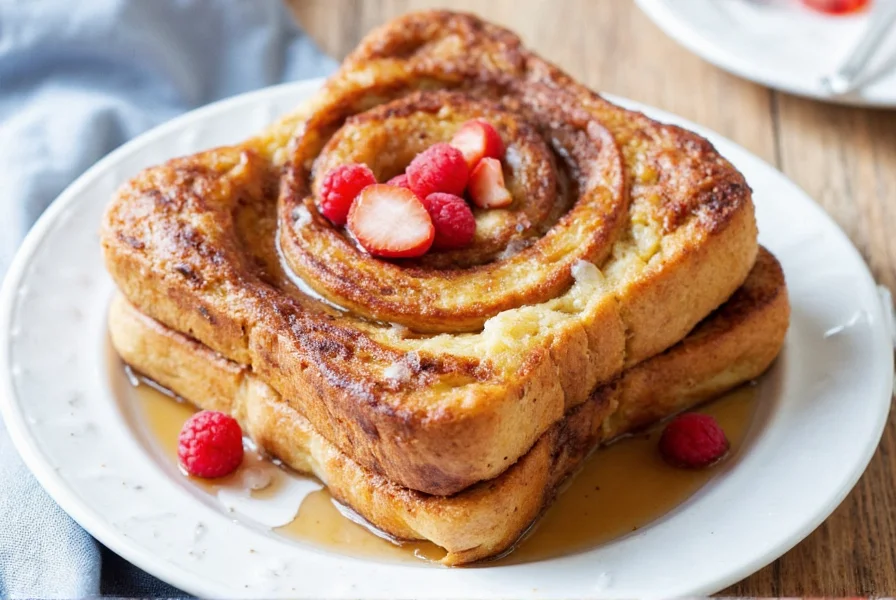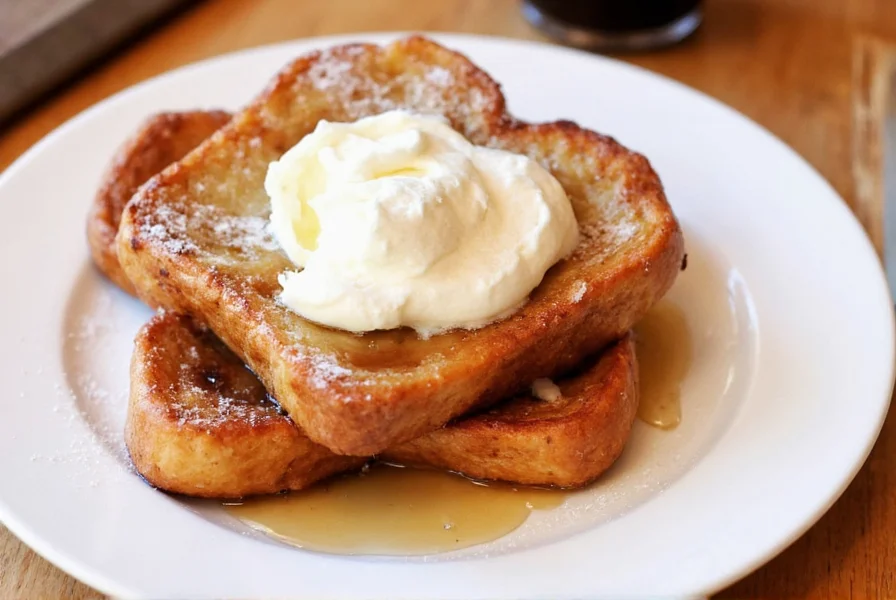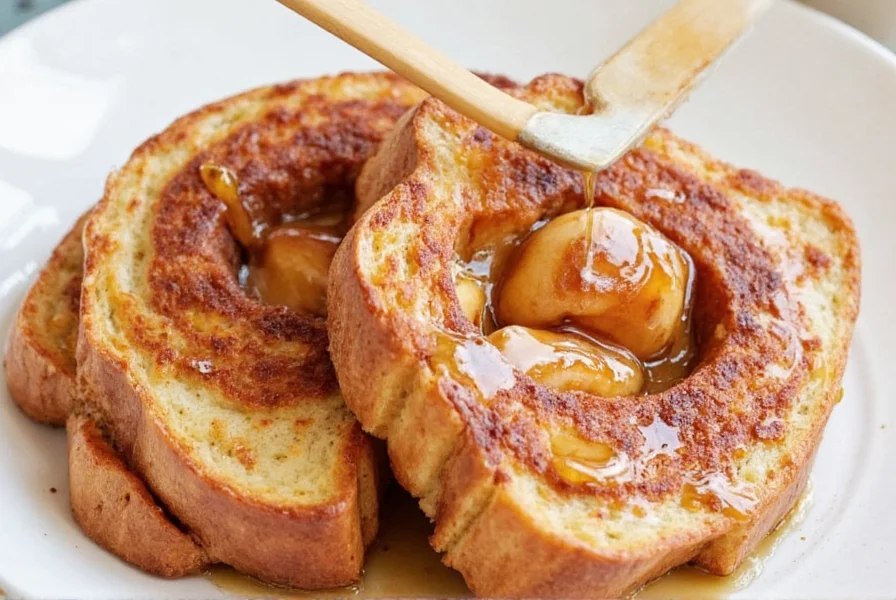Transform ordinary breakfast into something extraordinary with this cinnamon bun french toast recipe. Unlike standard french toast, this version captures the essence of everyone's favorite pastry through strategic flavor layering and finishing techniques. The magic happens in three key components: the spiced custard soak, the caramelized crust, and the signature icing drizzle.
Essential Ingredients for Authentic Flavor
Quality ingredients make the difference between good and exceptional cinnamon bun french toast. For the custard base, you'll need:
| Ingredient | Quantity | Special Notes |
|---|---|---|
| Day-old bread | 8 thick slices | Brioche or challah works best for optimal custard absorption |
| Whole eggs | 3 large | Room temperature for smoother custard |
| Whole milk | 1 cup | Substitute half-and-half for richer texture |
| Granulated sugar | 2 tbsp | Helps caramelization during cooking |
| Ground cinnamon | 1½ tsp | Freshly ground provides superior flavor |
| Vanilla extract | 1 tsp | Real extract, not imitation |
For the signature cinnamon bun finish, prepare a simple glaze using powdered sugar, cream cheese or melted butter, milk, and vanilla. The cream cheese variation creates the most authentic cinnamon roll experience.

Step-by-Step Preparation Guide
Follow these professional techniques to achieve perfect cinnamon bun french toast every time:
- Prepare the custard: Whisk eggs, milk, sugar, cinnamon, and vanilla until fully combined. For deeper flavor penetration, add ½ teaspoon of instant espresso powder (optional but recommended).
- Soak the bread: Use 1-inch thick slices of slightly stale bread. Dip each slice for exactly 20 seconds per side—any longer and the bread becomes too saturated.
- Cook properly: Heat butter and oil (1:1 ratio) in a cast-iron skillet over medium heat. Cook 3-4 minutes per side until deeply golden brown. The oil prevents butter from burning while the butter adds flavor.
- Make the glaze: Combine 1 cup powdered sugar, 2 oz softened cream cheese, 2 tablespoons milk, and ½ teaspoon vanilla. Whisk until smooth. Add more milk drop by drop if too thick.
- Finish authentically: Drizzle warm french toast generously with glaze, allowing it to pool around the edges just like traditional cinnamon buns.
Pro Tips for Restaurant-Quality Results
Avoid common mistakes that ruin cinnamon bun french toast:
- Bread selection matters: Brioche provides the ideal balance of richness and structure. Challah offers a slightly lighter alternative. Avoid sandwich bread as it lacks sufficient density.
- Temperature control: Maintain consistent medium heat. Too hot creates burnt exteriors with raw centers; too low makes the toast greasy.
- Custard ratio: The ideal egg-to-milk ratio is 1:3. More eggs create an omelet-like texture rather than custardy french toast.
- Glaze timing: Apply the glaze immediately after cooking while the french toast is still hot. This allows proper absorption and creates that signature sticky-sweet finish.
Variations and Customizations
Adapt this cinnamon roll stuffed french toast recipe to suit different preferences:
- Cheesecake twist: Mix 4 oz softened cream cheese into the custard for a cinnamon cheesecake french toast variation
- Overnight option: Assemble the soaked bread in a baking dish, refrigerate overnight, then cook in the morning for easy preparation
- Dairy-free version: Substitute coconut milk and flax eggs while using vegan butter for cooking
- Protein boost: Add one scoop of unflavored protein powder to the custard mixture without altering texture

Serving and Storage Recommendations
For the best cinnamon bun french toast experience, serve immediately after cooking. Pair with fresh berries to cut through the richness, and offer extra glaze on the side. Leftovers keep well for 2 days when stored in an airtight container in the refrigerator.
Reheat properly by placing slices on a wire rack over a baking sheet in a 325°F oven for 8-10 minutes. This method restores crispness better than microwaving, which makes the toast soggy. Never freeze french toast with glaze applied—freeze plain slices and add glaze after reheating.
Frequently Asked Questions
Can I use fresh bread instead of day-old for cinnamon bun french toast?
Yes, but you must dry the bread first. Place fresh slices on a wire rack in a 275°F oven for 10-15 minutes until the surface dries but the interior remains soft. This prevents oversaturation while maintaining structure during soaking.
How do I prevent soggy cinnamon roll french toast?
Sogginess occurs from improper soaking or cooking temperature. Use thick-cut bread, soak for exactly 20 seconds per side, and maintain medium heat in the skillet. The bread should feel substantial but not waterlogged after soaking.
What's the best substitute for cream cheese in the glaze?
For a similar texture without cream cheese, use 2 tablespoons melted butter combined with 1 tablespoon heavy cream. The butter provides richness while the cream creates the proper consistency for drizzling. Add an extra ½ teaspoon vanilla to compensate for flavor depth.
Can I make cinnamon bun french toast ahead for brunch?
Yes, prepare the custard and cut the bread the night before. Store components separately in the refrigerator. In the morning, soak and cook immediately before serving. For larger gatherings, cook the french toast, keep warm in a 200°F oven on a wire rack, and glaze each portion just before serving.











 浙公网安备
33010002000092号
浙公网安备
33010002000092号 浙B2-20120091-4
浙B2-20120091-4